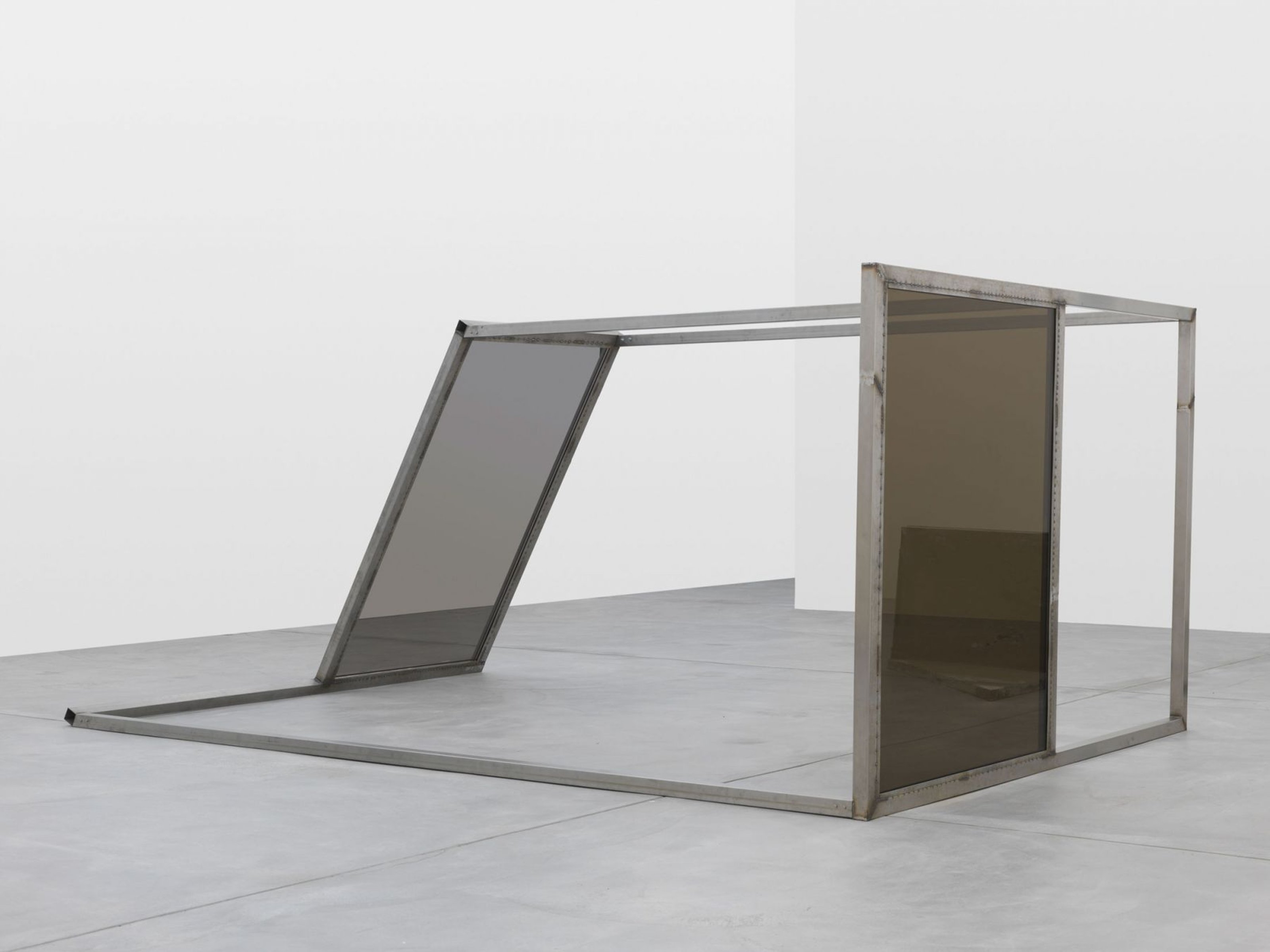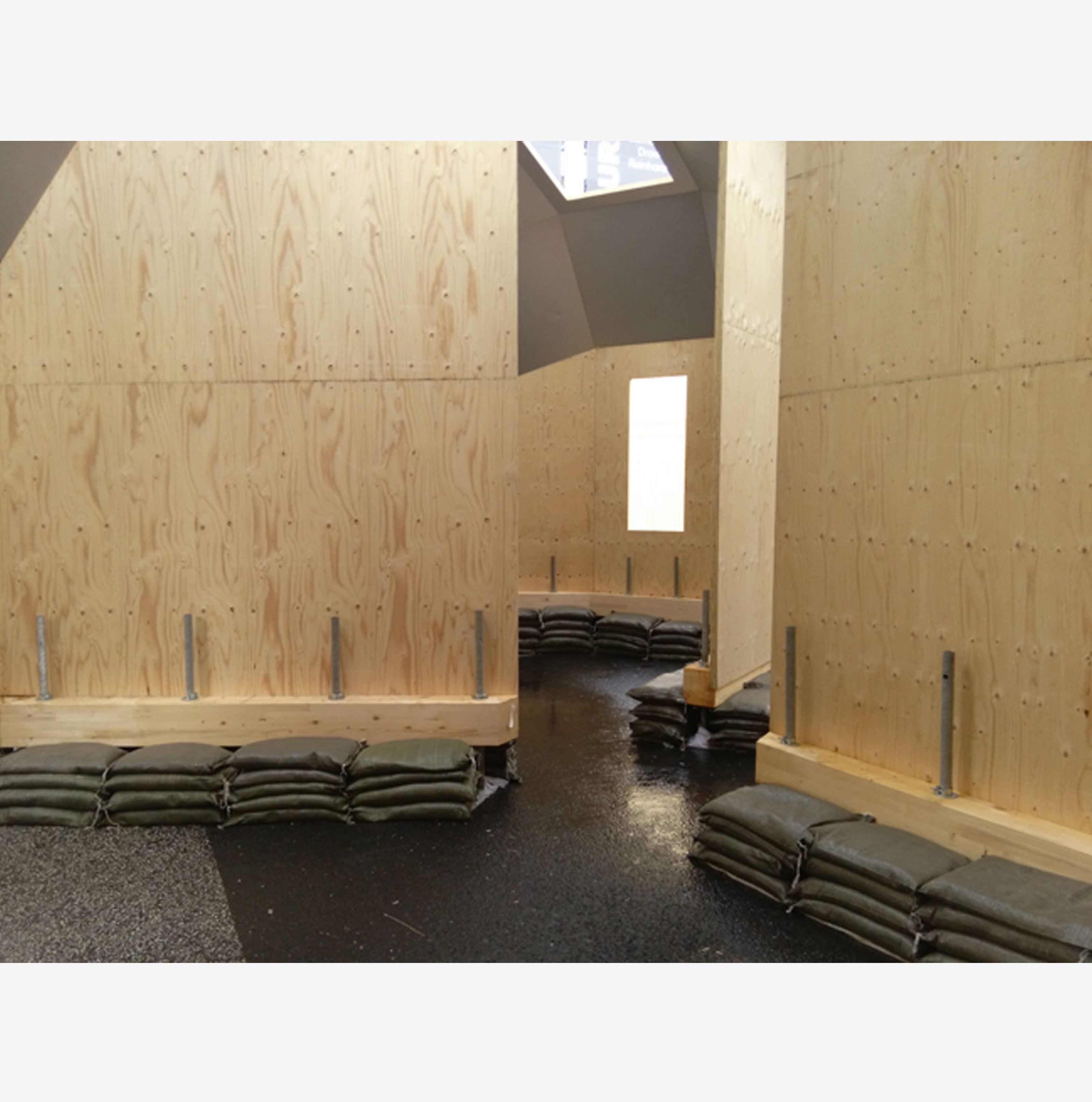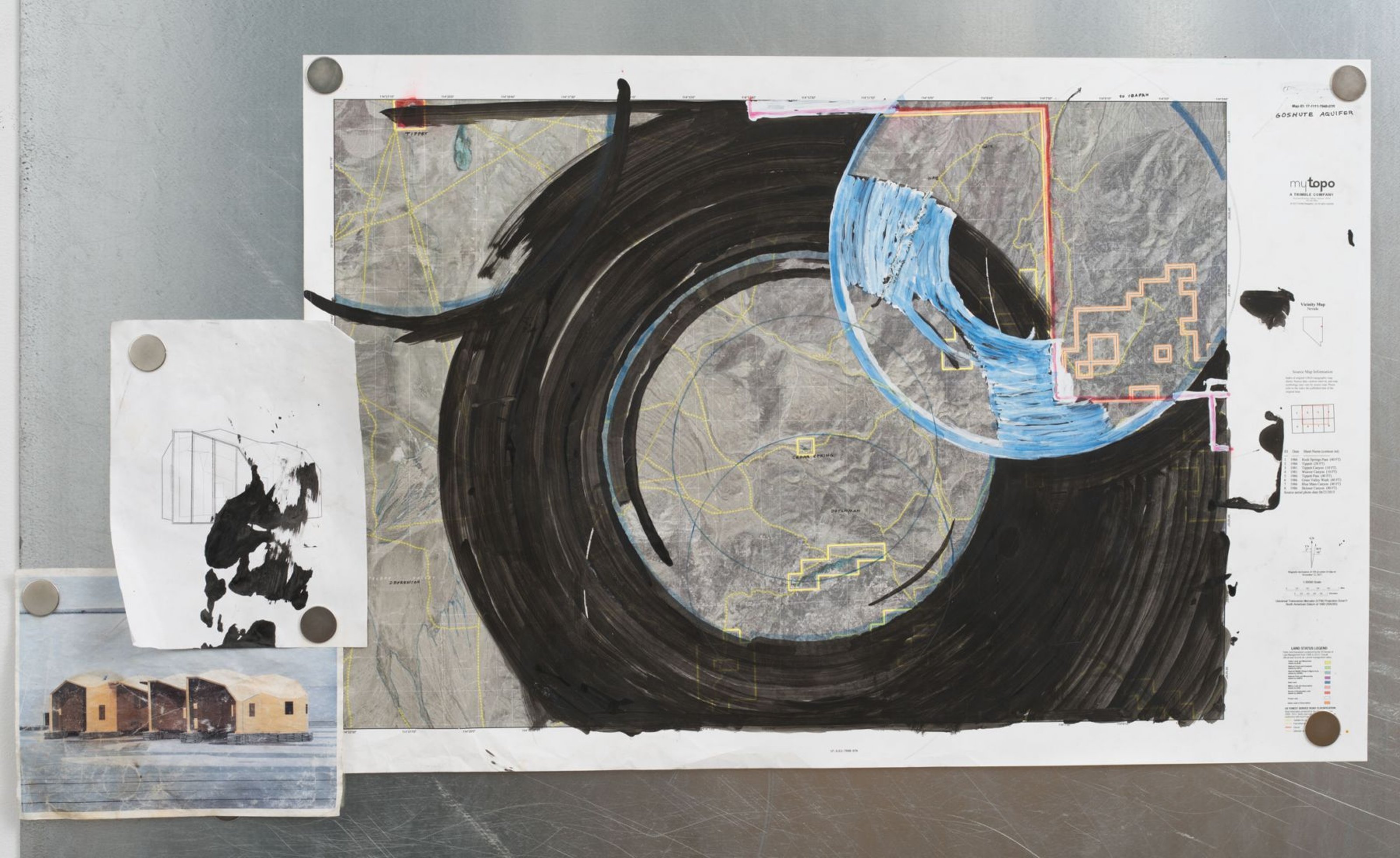Building your own home is probably one of the most human dreams that we share as a species. How it should look and which functions it might fulfill are naturally a personal matter, but most have an idea of how the space, in which they would like to live, work, and prosper, should look. And so it is unsurprising that capitalism has appropriated the dream and has been selling it like candy. As financial institutions played with the capitalist promise of creating one’s own home by selling mortgages, they ignored the fact that the financial market couldn’t realistically cover the risks taken, including the value given to buildings and houses. At least now, we are able to pinpoint the reason for the financial crisis of 2008 as this.

Oscar Tuazon – Windows, Walls, 2011/2012 – Courtesy Luhring Augustine
Capitalism has undoubtedly influenced architecture and the construction of habitational spaces. The tendency aims towards more rationalized and cost-efficient construction, contradicting inefficient human necessities, such as feeling at home, and planning for a static life. Think of public housing in Brooklyn, East London, or even the whole city of Brasilia; as if human life doesn’t change based upon ecological and economical developments or new social configurations of cohabiting individuals. So, what would a home with such flexibility look like? Some off-grid ideas, like self-sustaining farming systems, could inspire us as their value lies in their practical use and not in an abstract monetary value; the alteration of such a building is not constricted by a necessity to maintain that worth. Contrary to rebuilding a house after a tsunami with reimbursements from insurance, available materials can be used to have a qualitative reparation or adaptation of the building that cannot be reflected by monetary values.

Oscar Tuazon – Zome Alloy, 2016. Interior view

Oscar Tuazon – Water Map (Goshute Aquifer, Spring Valley, NV), 2018 – Courtesy Luhring Augustine
Sudden repairs made necessary by environmental damages are a chance to reconsider our priorities and to make the necessary changes. But under capitalism these changes are undesirable; flood-prone areas in the US are subject to the National Flood Insurance Program which insures property against flood damage, e.g. properties that were hit by hurricane Sandy in 2012. Implemented to shield owners from environmental damage to their property value, it has had the effect that these housing complexes are being rented to lower-income groups and that no effective flood prevention programs or buildings have actually been implemented. So instead of adapting to the flood-prone environment, these properties are doomed to be rebuilt and repaired to the same standard infinitely, just like Sisyphus forever pushes the boulder.
artwork: Oscar Tuazon – Zome Alloy, 2016. Interior view.
End.
This article is part of a series of special features for the exhibition ‘1-31’ curated by Adam Carr.